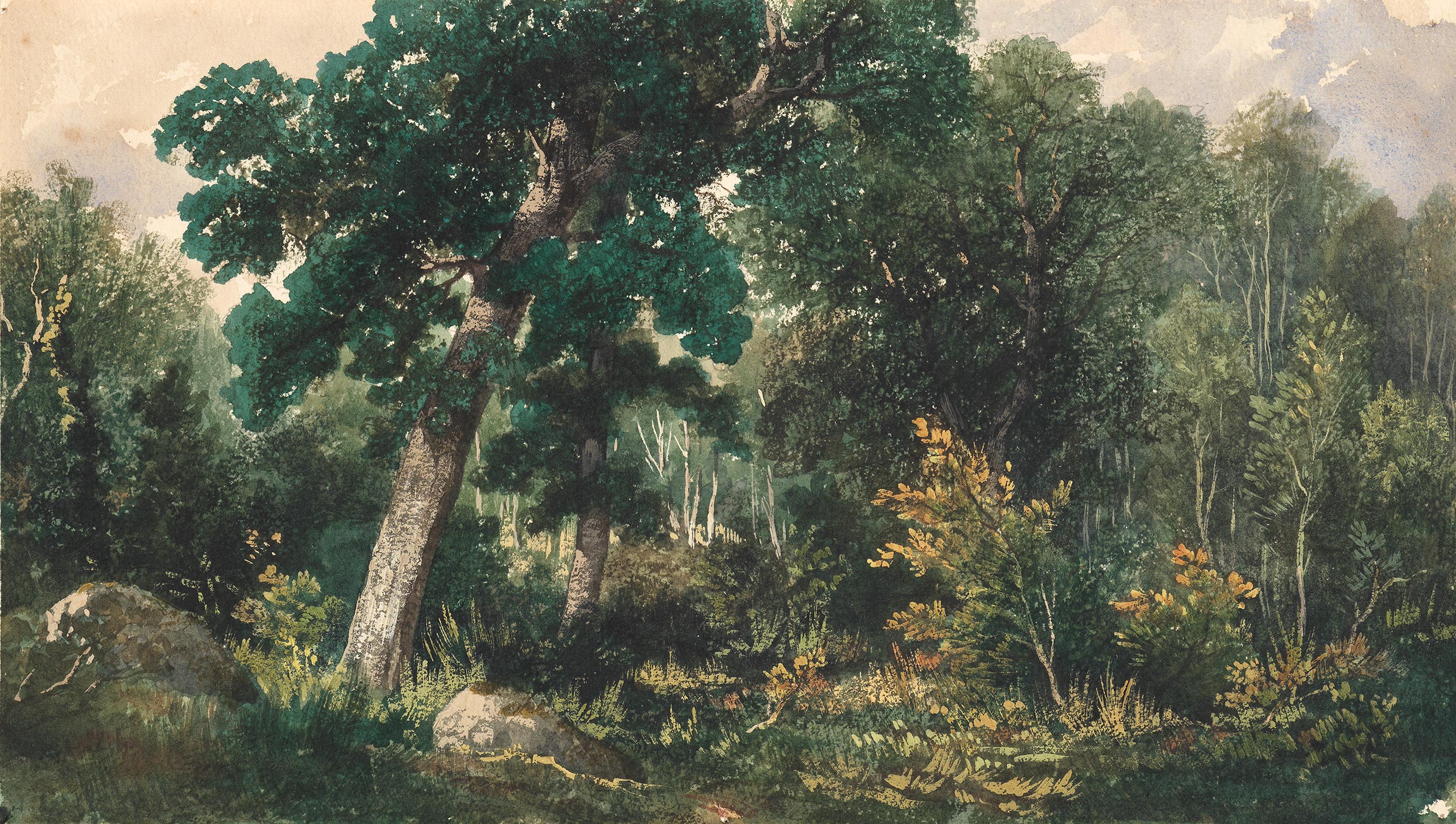
Lalaisse
François-Hippolyte
Nancy 1810 — Paris 1884
View of a Forest
Watercolour, gouache and gum arabic.
166 x 290 mm (6 1/8 x 11 7/16 in.)
Provenance
An album containing several works by Lalaisse, some signed, others unsigned, formerly in a private collection.
A student of Nicolas-Toussaint Charlet (1792-1845), and his collaborator as professor of drawing at the École Polytechnique between 1839 and 1877, François Hippolyte Lalaisse exhibited several paintings at the Salon from 1845 to 1874. He devoted much of his time to drawing and engraving illustrations, notably of military costumes, as seen in watercolours belonging to the Musée de l’Armée. Like his teacher Charlet, Lalaisse was more interested in his contemporaries and their customs than those of antiquity, but paradoxically, he also belonged to a movement that rejected modernity. His trip to Brittany and the costume studies he returned with are part of this counter-movement comprising an interest in the contemporary man, but also the traditional man and man of the land. The Musée des Civilisations de l’Europe et de la Méditerranée in Marseille (MUCEM) owns a fine album of watercolours produced during his stay in Brittany, which the artist subsequently used to produce a series of lithographs entitled La Galerie Armoricaine: costumes et vues pittoresques de la Bretagne (The Amorican Gallery: Costumes and Picturesque Views of Brittany) published in Nantes by Charpentier père et fils in 1848. Lalaisse specialized in traditional costumes, which he illustrated in works such as this or La Normandie Illustrée (Paris, Charpentier, 1852), and in suites of military costumes, for example. This work illustrating local costumes and lifestyles proved an invaluable source for researchers into Celtic culture that was very fashionable in the 19th century. Similarly, in the 1850s, in his search for current events rather than antiquity, or maybe, like Delacroix, a “living antiquity”, the artist travelled to North Africa, in particular Algeria and Turkey, and brought back numerous studies and watercolours. Like his friend Géricault, Lalaisse was also a tireless draughtsman and horse painter.
This forest study belonged to an album of drawings containing an ensemble of Lalaisse’s works. Landscape drawing is a little-known aspect of Lalaisse’s graphic activity, but one that he clearly practiced since he employs it with talent in his painting, even if only for background work. This work bears witness to an extraordinary grasp of nature and a fully romantic style. The mastery of various greens apparent in this View of a Forest, applied with a brush in small strokes that modulate luminous effects, as well as the elegant drawing of tree trunks and intelligent rendering of foliage, show the extent of the artist’s gift for landscape painting, a gift similarly visible in the View of the Sea that we also present.

